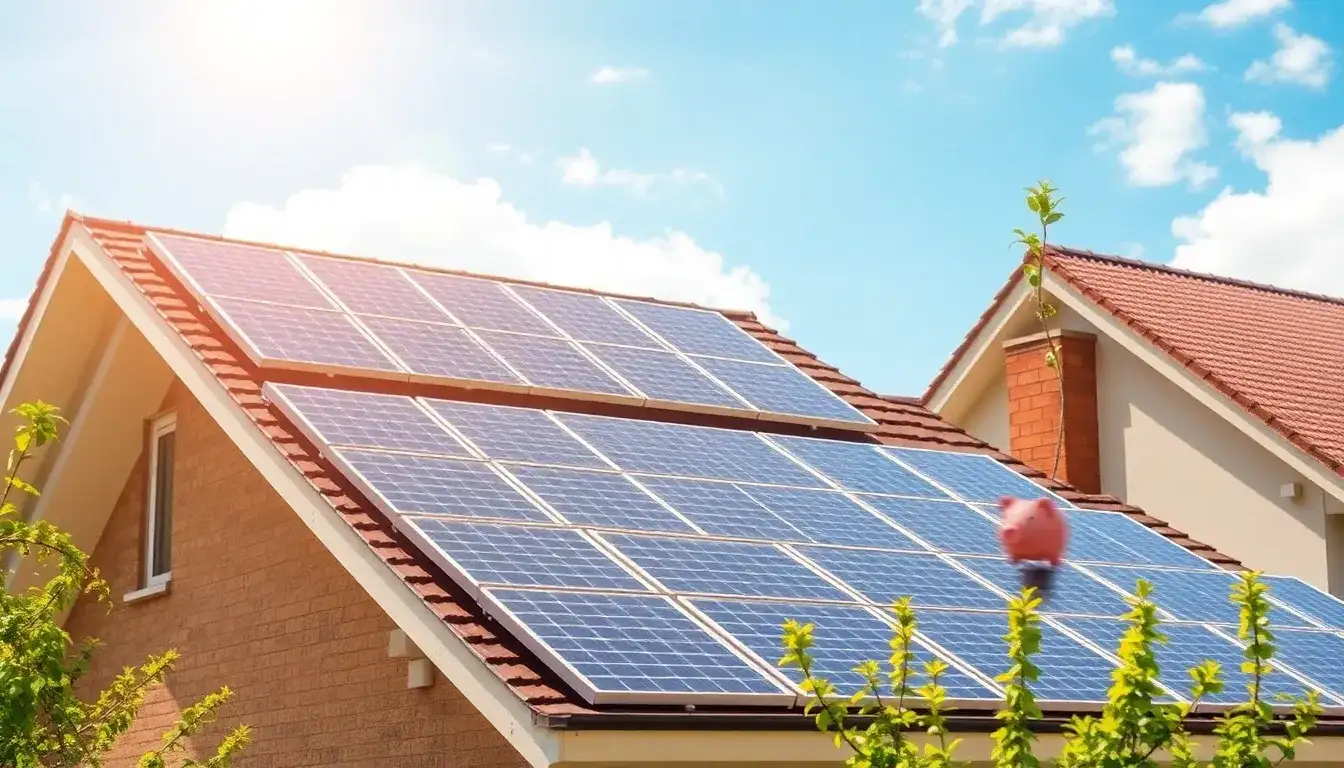
The Residential Clean Energy Credit enables homeowners to claim a deduction for the costs associated with new clean energy property, including solar panels. This credit for solar upgrades has been extended through 2034, encouraging more homeowners to transition to solar energy. Here’s how you can determine if you qualify and how to claim the solar tax credit to recoup the expenses of your solar installation.
What is the Residential Clean Energy Credit?
To promote the use of solar power, the U.S. government offers tax credits for solar systems. The Inflation Reduction Act has renamed and extended the existing solar tax credit, allowing it to remain in effect through 2034 for residential installations and increasing its value. Let’s explore the benefits of the solar tax credit and how you can claim it.
How Does the Federal Solar Tax Credit Work?
When you purchase solar equipment for your home and have a tax liability, you can generally claim a solar tax credit to reduce your tax bill. The Residential Clean Energy Credit is a non-refundable credit, meaning it can offset your income tax liability dollar-for-dollar, but any excess credit will not be refunded. However, if the credit exceeds your tax liability for the year, you can carry over the unused portion to future years as long as the credit remains available.
There are no income limits for the solar tax credit, so all individual taxpayers can claim it for qualifying solar energy equipment investments made in their U.S. residences. If you lease solar equipment or enter a power purchase agreement, you are not considered the owner and cannot claim the credit.
What Costs Are Covered by the Solar Tax Credit?
The Residential Clean Energy Credit covers qualified energy-saving equipment, including:
– Solar-powered equipment that generates electricity or heats water.
– Solar power storage equipment (with a minimum capacity of 3 kilowatt-hours required starting in 2023).
– Installation and labor costs associated with the solar system.
The credit does not apply to leased systems or those used for heating swimming pools or hot tubs.
Qualified Homes
To qualify for the solar credit, the energy-efficient improvements must be made to your U.S. residence, which can include:
– Houses
– Houseboats
– Mobile homes
– Cooperative apartments
– Condominiums
– Manufactured homes that meet Federal Manufactured Home Construction and Safety Standards
How Do I Qualify for the Solar Tax Credit?
To claim the solar tax credit on your tax return, you need to meet specific eligibility criteria:
– Your solar equipment must be installed between January 1, 2017, and December 31, 2034.
– The equipment must be located at a qualifying residence in the United States.
– The equipment must be new or used for the first time.
You also need to meet one of the following conditions:
1. Purchase the solar system outright or through a financing option that is not a lease or an agreement to pay a solar company for electricity generated.
2. Purchase an interest in a community solar project, provided that the electricity generated is credited against your home’s electricity consumption.
Benefits of Going Solar
Utilizing solar energy provides numerous benefits, including:
– Reducing pollution
– Lowering your carbon footprint
– Potentially decreasing your home’s energy costs
Since the installation of solar equipment can be expensive, the federal solar tax credit helps offset some of these costs. Additionally, various states offer incentives such as sales tax rebates or programs designed to make solar energy more affordable for residents.
What Are the Residential Solar Tax Credit Amounts?
Installing renewable energy equipment on your home can qualify you for a Residential Clean Energy Credit of up to 30% of your total qualifying costs, depending on when the equipment is installed:
– 30% for equipment placed in service from 2017 to 2019
– 26% for equipment placed in service from 2020 to 2021
– 30% for equipment placed in service from 2022 to 2032
– 26% for equipment placed in service in 2033
– 22% for equipment placed in service in 2034
The credit is set to expire after 2034.
Claiming the Solar Tax Credit for Rental Property
You cannot claim the Residential Clean Energy solar tax credit for solar installations at rental properties unless you also live in the property part of the year. In such cases, you must adjust the credit based on the time you reside there. For example, if you live in the property for three months of the year, you can only claim 25% of the credit.
Filing Requirements for the Solar Tax Credit
To claim the credit, you must file IRS Form 5695 as part of your tax return. Calculate the credit in Part I of the form and enter the result on your Form 1040. If your credit exceeds your tax liability (for example, a $3,000 credit against a $2,500 tax bill), you cannot receive a refund for the excess. Instead, you can carry over the unused portion to the next tax year. If you missed claiming the credit in a previous year, you can file an amended return to claim it.
With the extension of the residential solar tax credit through 2034 and its expanded value, now is an excellent time to consider adding solar energy to your home. This tax credit can effectively lower the cost of going solar while also reducing your overall carbon emissions compared to conventional energy sources. Combined with other energy efficiency home improvement credits made more accessible by the Inflation Reduction Act, investing in qualifying energy-related improvements has become more financially rewarding for homeowners.
For personalized assistance, consider letting a local tax expert from TurboTax Live Full Service handle your tax preparation, ensuring you maximize your deductions and receive every dollar you deserve. Alternatively, you can file your taxes independently with TurboTax Deluxe, which searches for over 350 deductions and credits to help you benefit maximally.
Original article by NenPower, If reposted, please credit the source: https://nenpower.com/blog/maximize-your-savings-understanding-the-federal-tax-credit-for-residential-solar-energy/


